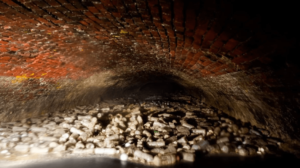Our 21st century has brought new wealth and new strains across the mining and commodities sectors. It has left governments and privateers clutching at new ideas to balance their books and keep doors open for their staff.
When hunting for gold, skilled geos may take their hammers and pans out into the field the old fashioned way, but shiny rocks may not be the only place to find high grade ore in the 21st century.
Some explorers have dared to think outside the box, and some have struck… well… gold. We take a brief look at two recent (and novel) projects…
Just look at the world around you Right here on the ocean floor, such wonderful things surround you, what more is you lookin’ for? Under the sea…

Earlier this month (July 2018) Seoul-based Shinil Group announced it had discovered the 1904 Russian ‘Dmitrii Donskoi’ battleship. She was supposedly sunk during the Russo-Japanese war off an eastern Korean island. The ship which lays 400m down on the ocean floor is reported to be the resting place for some 200 tonnes of gold.
Its not the first time similar claims have been made (about the same ship!) and it is unlikely to ever be raised. Local laws aimed at preserving national territory and property require the company to deposit 10% of the estimated value of the shipwreck before starting its salvage works, the company themselves have made the error of declaring the wreck could be worth some 150tn Korean Won (US$132bn).
A) This is a completely unrealistic valuation of the the gold
B) It may be unrecoverable anyhow
It is, however, every Jules Verne enthusiast’s dream to think such massive discovery may be sitting in a treasure chest under the waves just waiting for a brave adventurer to stumble across it. We applaud their resolve to at least have a go!
2. What have you been flushing down the pan?

Japan is well known for its highly skilled labour and production of precision technology, with world class gold production as well as high import levels, primarily for the manufacture of electronic devices.
What happens when a factory floor gets mopped up? When the dust and dirt from the days intensive production gets washed down from the work surfaces, When the workers wash the dust off themselves at home after a long shift?
Yep, splash, sploosh, down the sewer. Surely fuss over nothing? Ahhhh no.
For perspective, Japan’s Hishikari mine is one of the world’s best known gold deposits. Ore from the mine produces between 20 & 40 g/tonne, a respectable (enviable) grade, and a vital one for Japan’s industries.
When a sewage plant in Nagano prefecture processed 1 tonne of incinerated sewage (ash) in 2009, they recovered a staggering 1890g/tonne of gold. Yep, 1.89kg of gold from 1 tonne of burnt waste. That’s 48x more than from the highest grades at Hishikari.
Since then, other regions where large amounts of gold are handled have tried to get in on the act. The first major report was published in the academic journal ‘Environmental Science & Technology‘. A lucky team led by Paul Westerhoff at Arizona State University tested over 50 sewage waste samples for rare earths, platinum group elements, silver and gold. They proposed that:
For a community of 1 million people, metals in biosolids were valued at up to US$13 million, annually
New York is less known for its underground sewer panners, unfortunate souls who wash the city’s sludge in the vast network for unfaithful partner’s rings, misplaced heirlooms. Small scale, dreaming like every prospector… BUT (if we scale up the numbers) NYC could become famous for recycling some US$100 million of metals per year from its effluent, not only adding to the city’s coffers, but cleaning up the historic sewerage system in one (very) fowl swoop.
That’s our two favourites… If you want more, why not take a look at this old forum thread for some bizarre hunting tips!
Written by Liam Hardy for MiningIR


















